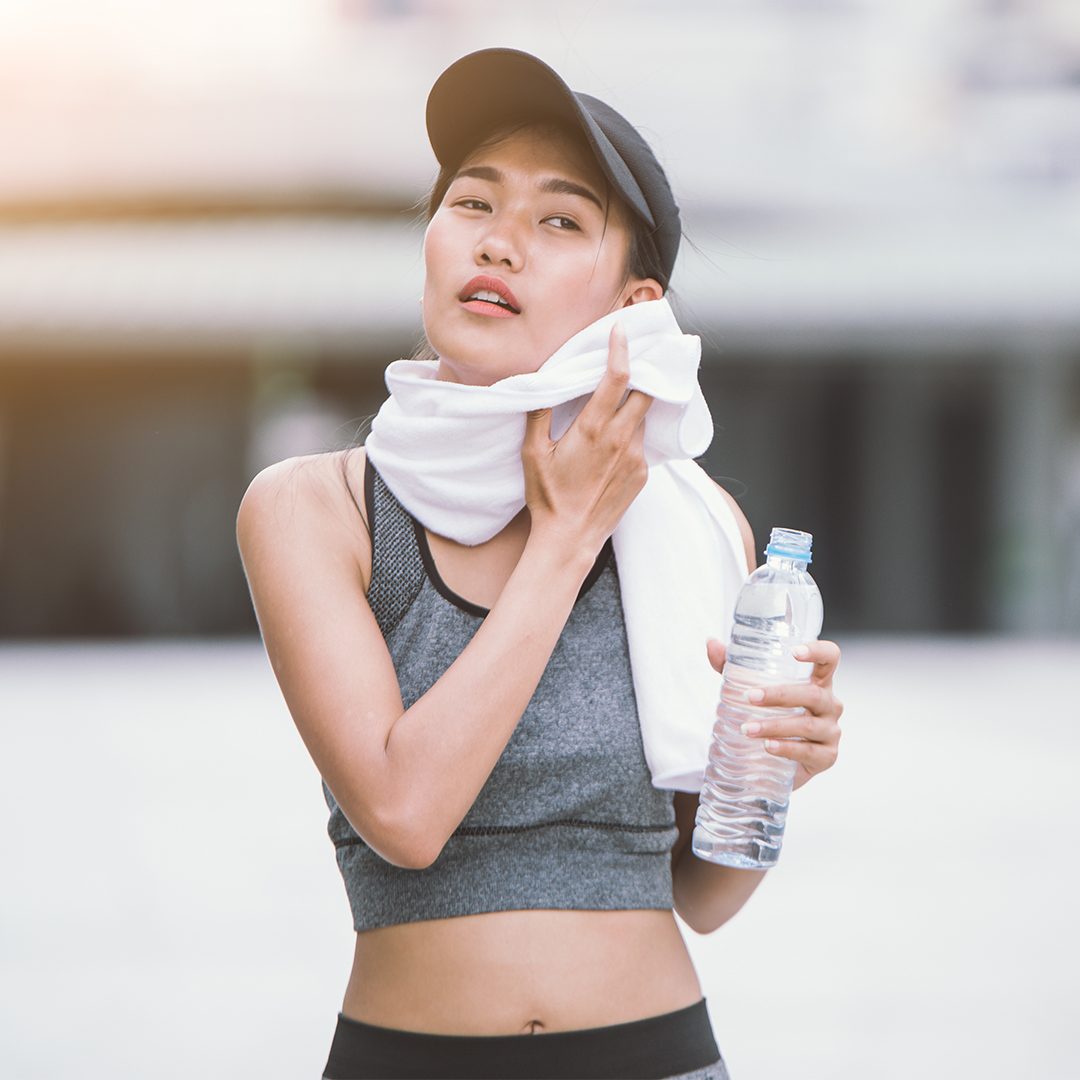SUMMARY
This is AI generated summarization, which may have errors. For context, always refer to the full article.

Temperatures are rising in the Philippines once again and it’s getting harder to motivate yourself to get up and actually sweat more.
Whether you’re just starting out in your fitness journey, a recreational or an elite athlete, training in the heat can leave you feeling more drained and fatigued.
In the first part of Rappler’s fitness recovery series with REBEL app’s in-house physical therapist Josh Manoharan, he discusses how heat affects training and how we can speed up recovery during the summer.
First off: Knowing your goal
Like everyone else, Manoharan – who has been in the fitness industry for 6 years – feels less motivated to work out in the pandemic.
Aside from being limited to a small home space, Filipinos have no summer vacations to look forward to because of the stringent lockdown restrictions in place – meaning there’s no need for that “beach body.”
But even with the absence of that season of showing off your hard work, Manoharan stressed it is still important to get some exercise and to set fitness goals for yourself, which you can tailor so that it meets your workout and recovery needs.
“We need to define our goal, first of all – if you want to just keep an active lifestyle, or do you want to build muscle? Do you want to be more flexible?” said Manoharan, who also works with F45 Training and Kerry Sports Manila.
According to the physical therapist, patience will also be necessary as results from a sustainable workout program will only show after at least 4 weeks.
Heat hinders maximum output
Do you feel you’re not reaching your goals because it’s just uncomfortably hot when you train? You’re not alone.
“What heat does is since you’re tired, you can’t give your maximum output,” said Manoharan.
The physical therapist shared that there are cases where athletes get more fatigued because of the heat and end up compromising their form just because they want to finish the workout, leading to more problems in their career.
“I would definitely avoid training [directly under] the sun,” said Manoharan. “You don’t want to not perform just because it’s hot.”
If you work out in the morning, it’s recommended to train between 6 am to 9 am, especially if you’re doing sports outdoors, or adjust your workout time to late afternoon or evening.
But with the rising popularity of some workouts that are done in high-temperature rooms like hot yoga, Manoharan suggests to go back to the fitness goal you set for yourself.
“Again, this is why I stressed on the goals: Why do we need to turn up the heat of the room? What’s the purpose? Are we sweating enough?” asked Manoharan.
“If you’ve heard of Bikram yoga, they turn up the heat of the room further because there is something deeper than that, something spiritual about it.”
Hydration is key
The “standard” of 6 to 8 glasses of water a day gets a little bit more complicated these days.
According to Manoharan, the body needs to keep a hydration level of at least 60%, and the requirements vary from person to person.
It factors in a person’s body type, the intensity of the exercises, how much they sweat during a workout, and not to mention the daily heat index during Philippine summers.
For people who don’t have access to a body composition machine, an indicator of hydration is the color of the urine, where the paler the color, the more hydrated you are.
But in the case of electrolyte imbalances caused by high-intensity workouts, sports drinks can be consumed to replenish the electrolytes in the body.
Manoharan, though, recommends to classify what kind of athlete you are first and to get your electrolyte replenishment from fruits and vegetables or by drinking more water to hydrate before depending on sports beverages.
“Sometimes we have electrolyte imbalance, that’s why we go back to hydration, diet – our fruits and vegetables – because that’s where we get our potassium, salt, magnesium. There’s no harm in taking [sports drinks], but again, we shouldn’t depend too much on those,” said Manoharan.
But for endurance athletes like marathon runners, their needs are definitely greater to keep the body fueled.
“Of course [marathon runners] have a different level of need, so they need those gel packs to be consumed during the run,” added Manoharan. – Rappler.com
New to REBEL? Find out more about the app here.
Add a comment
How does this make you feel?
There are no comments yet. Add your comment to start the conversation.